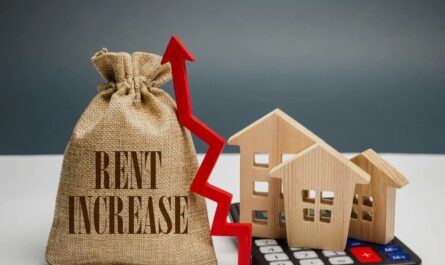Arizona’s red-hot real estate market has helped homeowners build serious equity, but it’s also creating a quiet tax crisis for thousands of sellers. A federal capital gains rule that hasn’t changed since 1997 is now threatening to reduce profits for longtime owners across the state.
According to the National Association of REALTORS®, 48.5% of Arizona homeowners have surpassed the $250,000 capital gains exclusion available to single sellers.
Another 10.3% have exceeded the $500,000 cap for joint filers. As values continue rising across Phoenix, Tucson, and other major metros, those numbers are only expected to grow.
An aging tax rule in a fast-growing market
The current exemption was designed to simplify taxes on home sales. Single sellers can exclude up to $250,000 in gains, and married couples can exclude up to $500,000. But those caps were set in 1997—and never adjusted for inflation.
Since then, national home prices have increased by more than 260%. If the exemptions had kept pace, they’d now be $660,000 for individuals and $1.32 million for couples. Without that adjustment, more Arizona homeowners are finding that the equity they built up over years—or decades—may now trigger a tax bill.
Sellers also face federal capital gains tax rates of up to 20%, depending on income. And while Arizona’s state rate is relatively low at 2.5%, it still adds to the burden. For homeowners nearing retirement, those taxes can erode funds needed for health care, relocation, or downsizing.
A growing issue across the Southwest
Arizona’s current exposure may appear moderate compared to other Sunbelt states. Florida, for instance, has nearly 48% of homeowners already over the $250,000 cap, and California’s rates are even higher. But Arizona’s growth trajectory makes it one of the next states to watch.
In areas like Maricopa and Pima counties, strong demand and limited inventory have driven up prices rapidly. Many owners who bought in the early 2000s are now discovering they’ve crossed the tax threshold—often without realizing it.
In some cases, sellers are surprised to learn that routine appreciation has made their profit taxable. Many assumed that capital gains taxes on real estate only applied to high-end or investment properties. But in today’s Arizona market, middle-income homeowners are increasingly at risk.
The 2035 outlook
Looking ahead, the problem is expected to grow dramatically. By 2035, projections show that 39.70% of Arizona homeowners could exceed the $250,000 exemption limit. An estimated 8.80% will go over the $500,000 threshold.
That kind of exposure adds real pressure to the housing market. As more owners opt not to sell to avoid taxes, listings shrink. This “stay-put penalty” means fewer homes become available for first-time or move-up buyers. The result: lower turnover, higher prices, and even more tax risk as values keep rising.
It’s one reason why experts say the housing market is freezing, especially in fast-appreciating states like Arizona. A lack of mobility—driven by tax disincentives—is making the inventory crunch even worse.
A policy fix could change the equation
To address the issue, a bipartisan proposal known as the More Homes on the Market Act would double the exemption limits and index them to inflation going forward. Supporters say that change would unlock more inventory and restore fairness to the tax code.
“Equity shouldn’t be a trap,” says Shannon McGahn, chief advocacy officer at the National Association of REALTORS® in their report. “It should be a stepping stone for the next chapter”.
In the meantime, Arizona homeowners should plan ahead. Those considering a sale can benefit from reviewing how capital gains taxes apply to home sales and speaking with a tax advisor. Knowing the thresholds—and how close you are to crossing them—can help avoid costly surprises when it’s time to move.




